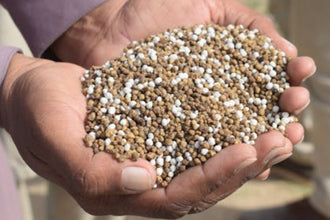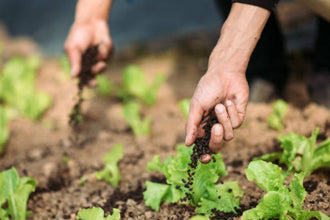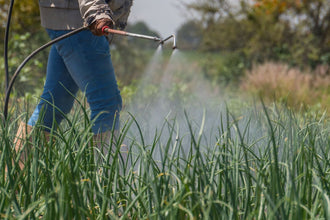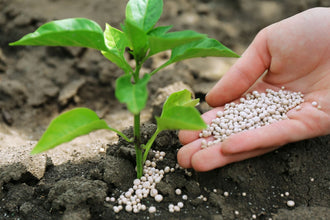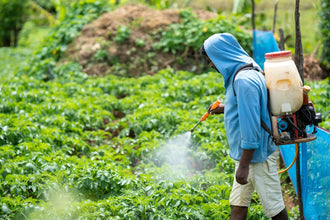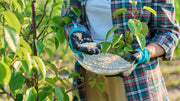
Getting your fertilizer dosage right feels like walking a tightrope sometimes. You know your plants need food to grow, but how much is too much? And what happens if you don't give them enough?
Most of us have been there. You either baby your plants with tiny amounts of fertilizer or dump way too much, hoping for miracle growth. Both approaches can leave you staring at disappointing results.
The truth is, plants are pretty good at telling you what they need. You just have to know how to listen. And once you figure out the right fertilizer dosage for your garden, everything changes. Your plants grow stronger, your harvest gets bigger, and you stop wasting money on products that aren't helping.
Understanding What Your Plants Actually Need
Plants don't eat the same way we do. They can't just gobble up a big meal and be satisfied for hours. Instead, they sip nutrients slowly throughout the day, taking what they need when they need it.
Your soil acts like a pantry, storing nutrients until plants are ready to use them. But here's the thing that most people miss: different soils hold onto nutrients differently. Sandy soil is like a colander, letting nutrients wash away quickly. Clay soil grips nutrients so tightly that plants sometimes can't get to them.
Weather messes with this whole system too. Hot days stress plants out, so they can't process as much food. Rainy periods wash nutrients away before roots can grab them. This is why the same fertilizer dosage that worked great last month might not cut it this month.
How Plants Tell You What They Want
Your plants are constantly sending you messages about their nutrition needs. You just need to learn their language.
Pale, yellowish leaves usually mean your plants are hungry for nitrogen. It's like they're saying "feed me more greens!" Purple or reddish colors on leaves often point to phosphorus shortage. Dark green, lush plants that won't flower are probably getting too much nitrogen and not enough phosphorus or potassium.
These signals show up before your plants get really sick. Catching them early means you can adjust your fertilizer dosage before things go downhill. Healthy plants fight off bugs and diseases much better than stressed ones.

Why Soil Testing Beats Guessing
Playing the guessing game with fertilizer dosage wastes time and money. You might be adding nitrogen when your soil already has plenty, or skipping phosphorus when your plants are starving for it.
A simple soil test costs about as much as a bag of fertilizer, but it tells you exactly what's going on underground. Most home tests check the big three nutrients (nitrogen, phosphorus, potassium) plus pH levels.
pH matters more than most people realize. Even if your soil has plenty of nutrients, plants can't access them if the pH is wrong. It's like having a full refrigerator but keeping it locked.
The Problems with Over-Feeding
More fertilizer doesn't always mean better results. Actually, too much fertilizer causes more problems than most people expect.
Plants that get too much nitrogen grow like crazy, but not in a good way. They produce tons of soft, weak leaves that bugs love to munch on. All that energy goes into making foliage instead of flowers or fruit. Your tomato plants might look amazing in June but give you hardly any tomatoes in August.
Too much phosphorus creates a different problem. It locks up other nutrients in the soil, making them unavailable even though they're sitting right there. Your plants start showing signs of iron or zinc deficiency while surrounded by these nutrients they can't touch.
Spotting Over-Feeding Before It's Too Late
Over-fed plants have some telltale signs once you know what to look for:
-
Excessive leaf growth with few flowers or fruits
-
Salt buildup around the base of plants (looks like white crusty stuff)
-
Weak, floppy stems that can't support the plant
-
Brown, crispy edges on leaves (this is called fertilizer burn)
-
Plants that grow too fast and seem weak overall
The worst part about over-feeding is that it doesn't just hurt your plants. Excess fertilizer runs off into waterways and causes algae blooms that kill fish. It can even contaminate drinking water if enough people in an area over-fertilize their gardens.
When Plants Don't Get Enough Food
Under-feeding is sneakier than over-feeding. Your plants don't die dramatically; they just never reach their potential. They grow slowly, produce less, and get sick more often.
This happens a lot with organic gardeners who are scared of burning their plants. The fear of over-doing it leads to under-doing it, which isn't much better for your garden.
Poor soil makes this problem worse. If you're working with dirt that's basically sand or hard clay with no organic matter, your plants need more help than healthy, living soil would require.
Signs Your Plants Are Still Hungry
Different nutrients create different deficiency symptoms, and knowing these helps you adjust your fertilizer dosage:
-
Nitrogen shortage: Leaves turn yellow starting with the older ones at the bottom
-
Phosphorus problems: Purple or red colors appear, especially on leaf undersides
-
Potassium issues: Leaf edges look brown and scorched, stems feel weak
-
Calcium deficiency: Blossom end rot on tomatoes and peppers
-
Magnesium shortage: Yellow patches between the green leaf veins
Under-fed plants also have weak root systems. Poor roots can't support good growth above ground, so the whole plant struggles. It becomes a cycle where weak plants can't access nutrients well, which makes them even weaker.
Getting Your Fertilizer Dosage Just Right
The sweet spot for fertilizer dosage comes from understanding what specific plants need and when they need it. Lettuce and spinach want steady nitrogen all season long. Tomatoes and peppers need less nitrogen and more phosphorus as they start making fruit.
Start with what the package says, then watch how your plants respond. Keep notes about what you applied, when you applied it, and how the plants looked afterward. This creates your own personal guide for next season.
Doing the Math on Application Rates
Most fertilizer labels give you dosage per square foot or per plant. These work fine for average conditions, but you might need to tweak them based on your specific situation.
Sandy soils need lighter, more frequent applications because nutrients wash away faster. Clay soils can handle bigger doses less often because they hold onto nutrients better.
Container plants play by different rules entirely. The small amount of soil in pots needs more frequent feeding, but at weaker concentrations than what you'd use in the ground.
Timing Makes All the Difference
Organic and synthetic fertilizers work on different schedules. Synthetic fertilizers hit fast and hard, giving plants an immediate boost. But they can burn if you use too much, and they don't last very long.
Organic fertilizers take their time. They need soil bacteria to break them down before plants can use them. This slower release makes them more forgiving if you mess up the dosage, but you need to apply them earlier in the season.
The 4-2.5-2 ratio found in quality organic fertilizers gives plants a balanced diet that supports both quick growth and long-term soil health. This balance makes it harder to over-feed while still providing plenty of nutrition.
Adjusting for the Seasons
Your fertilizer dosage strategy should change with the calendar. Spring feeding supports the burst of growth as plants wake up from winter. Summer applications keep production going during the busy growing season.
Fall feeding focuses on root development and winter prep rather than pushing new growth that might not have time to harden off before cold weather hits.
Cool-season crops like lettuce and peas have different feeding schedules than warm-season plants like tomatoes and squash. Matching your fertilizer dosage to these natural cycles improves results while reducing waste.
Smart Application Methods
How you put fertilizer down matters as much as how much you use. Broadcasting granular fertilizer works great for lawns where you want even coverage everywhere. But in vegetable gardens where plants are spaced apart, you're feeding a lot of empty soil.
Side-dressing puts fertilizer right where roots can grab it. This targeted approach lets you use less fertilizer while giving plants better nutrition. You're not wasting product on soil between rows where nothing is growing.
Liquid fertilizers give you precise control and fast results. They work especially well for container gardens and when you need to fix a deficiency problem quickly.
Getting the Timing Right
Early morning applications work best because plants spend the day processing nutrients while photosynthesis is active. Avoid fertilizing during hot afternoons when plants are stressed and can't handle the extra work.
Always water after applying granular fertilizers. This dissolves the pellets and moves nutrients down to root level where plants can actually use them. Without water, granular fertilizer just sits on the surface doing nothing.
Split applications beat single big doses for most plants. Instead of dumping all your fertilizer at once, divide it into smaller amounts applied throughout the growing season. This keeps nutrition levels steady without overwhelming plants.
Transform Your Garden with Better Fertilizer Dosage
Getting fertilizer dosage right isn't rocket science, but it does take some practice and attention. The payoff comes in stronger plants, bigger harvests, and fewer pest problems.
Start conservative and work your way up based on what you see. Keep track of what works in your garden because every location is different. What works for your neighbor might not be perfect for your soil and climate.
Remember that good fertilizer dosage builds better soil over time. Instead of just feeding plants, you're creating an environment where everything thrives naturally with less work from you. Your garden gets more productive each year, and you'll spend less time fighting problems and more time enjoying the results.




